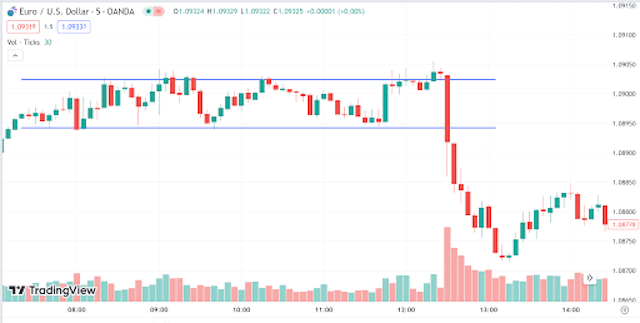How to Predict Where the Market Will Open
Fact checked by Ryan Eichler
Stock trading takes an abrupt halt each trading afternoon when the markets close for the day, leaving hours of uncertainty until the next day’s opening. Then you might hear a commentator say something like “Markets are poised to open higher” or “We expect to see markets move lower at the open” when you sit down for breakfast in the morning and turn on the news.
The closing price from the day before should tell you how much money you’ve gained or lost in your portfolio for the day but there’s more to the story than you might expect. It’s important to understand how these market forecasts are derived and how they can inform your trading strategy.
Key Takeaways
- Predicting where the market will resume trading at the open can help investors hedge risk and place bets on the next day’s price action.
- After-hours trading in stocks and futures markets can provide a glimpse but these tend to be less liquid and prone to more volatility than during regular trading hours.
- Investors look to international markets that are open while the U.S. is closed, economic data released by countries, or figures released by companies for a clearer picture.
Predicting the Likely Direction of the Market Open
The financial markets have clearly stated business hours but developments outside these hours influence both the value of securities and investor behavior. Geopolitical events and natural disasters can occur at any time. Something extreme like the assassination of a sitting president or a major terrorist attack is likely to indicate a significantly lower market open.
Corporate data releases also play a role. Earnings announcements made after the close or before the open in key companies can influence the market’s direction. Most firms release their results for the quarter in January, April, July, and October. Good news from a bellwether firm often leads to a higher stock market open while bad news can have the reverse effect.
Other important news comes out before the markets open. Various economic releases including employment data, retail sales, and gross domestic product results are released at 8:30 a.m. Both good news and bad news can sway the market’s open direction.
Examples of news and events
Two examples from this decade show how events can affect the market open. Many changes overnight affected the market open during the COVID-19 pandemic. The pandemic’s spread caused a fall in the market throughout March 2020. The S&P 500 closed at 2,741.38 on March 11, the day the World Health Organization officially declared COVID-19’s spread a pandemic. It opened the next day at 2,630.85, a fall of more than 100 points.
The Russia-Ukraine war also affected the markets. It shook the markets when Russia invaded Ukraine on Feb. 24, 2022, causing the S&P 500 to open at 4,155.77, a drop from the previous day’s close at 4,225.50.
After-Hours Trading
After-hours trading commonly helps indicate the next day’s open. Extended-hours trading in stocks takes place on electronic markets known as ECNs before the financial markets open for the day as well as after they close. This activity can help investors predict the open market direction. Gauges such as the Nasdaq-100 Pre-Market Indicator are designed to track extended hours of activity for this purpose.
Index futures can foreshadow how the market will likely trend at the start of the next session because they trade virtually 24 hours a day. S&P 500 futures are used by money managers to either hedge risk over a certain period by selling the contract short or to increase their stock market exposure by buying it.
Unlike the stock market, futures markets are closed less often. Index futures trade based on the values of the stock market benchmark indexes they represent: S&P 500 futures trade based on the value of the Standard & Poor’s 500 just as Dow futures trade based on the value of the Dow Jones Industrial Average.
The securities in benchmark indexes represent a specific market segment so knowing the direction of pricing on futures contracts for those indexes can help project the direction of prices on the actual securities and the market. Stock prices on U.S. exchanges will likely move lower when trading opens for the day if S&P futures are trending downward all morning. The opposite is also true, with rising futures prices suggesting a higher open.
A major benefit of futures in addition to offering market access almost 24 hours a day is their high liquidity after hours compared with the stocks traded on ECNs. This liquidity affords tighter spreads, which are critical because the wider the spread, the more a trade has to move in your favor for you to break even.
Important
E-mini S&P 500 futures trades are executed through the Chicago Mercantile Exchange and its member firms, unlike trading stocks on ECNs.
International Markets Influence the Open
International markets are open and trading when domestic markets are closed for the day. A good day in Asian markets can suggest that U.S. markets will open higher. Devastating losses overseas can lead to a lower open at home.
Domestic investors can get an idea about what direction they can expect local markets to move when they open for the day by paying attention to foreign developments. Major stock exchanges in Tokyo, Frankfurt, and London are used as barometers for what will happen in the U.S.
Serious market watchers wake up early, pull the data, and use these indicators on their own and together to tease out the direction of the opening moves in the U.S. market. Less ambitious investors just check in on social media sentiment or tune in to the morning financial news broadcasts to hear talking heads provide an update on expectations for the day. Getting solid reading on what to expect when U.S. trading starts for the day is possible either way.
Example of international market effect
International markets are open when American markets aren’t so changes in those markets can influence how the American market opens. A typical example would be Feb. 14, 2024 when the FTSE 100 index moved much higher shortly after opening and remained above its previous close.
The U.S. market opened higher than its last close when it opened later that morning. The S&P 500 opened at 4,976.44 compared with its previous close of 4,953.17.
Why the Direction Is Important
The market direction can present some investment opportunities. If markets are set to rise, individual stock prices are likely to do so as well. Short-term traders can make buy/sell decisions based on the information. A company’s stock is likely to increase at the open if markets are set to rise and then a technology company releases good news before the opening bell.
This could be a signal for investors who hold the stock to sell existing holdings and lock in profits. It could be a signal for investors who don’t own the stock to buy early and sell into a rising market. The exercise in tracking market direction may be meaningless, however, if you only have a few dollars to invest,
Buying 100,000 shares that climb two cents each could make a quick $2,000 ignoring transaction costs. Not bad for an hour’s work. You could make a quick $50,000, if you can buy 500,000 shares that rise 10 cents and the numbers go up from there. Serious money can be made on these moves by big institutional investors. Even price movement measures in a fraction of a cent can result in big gains for deep-pocketed traders who make the right call.
Using This in Real Life
Accurately predicting the stock market’s opening moves can be a helpful tool. You have an opportunity to profit if you’re accurate but the first step is to gauge the market direction correctly.
Select an investment that intrigues and interests you and gauge the impact the market’s move will have on its potential to earn you a profit. The market may move against you if you don’t correctly guess the market’s direction. Your investment must also be correct to generate a profit even if you get the direction right.
Start your day by putting down that cup of morning coffee – or pouring yourself a second or a third. Take some time to review all potentially affecting events that occurred overnight. Find a crystal ball and peer into it to try to ascertain what might happen in the immediate future. Don’t focus on how much you hope to gain. Determine how much you can bear to lose.
It’s always advisable to check into the opinions of others as well, particularly professionals, if you’re new to trading. You might also spend some time playing around on a stock simulator first to get an idea of how your predictions work out over time.
Is It Better to Buy at the Market Open or Close?
There isn’t a single time of day that presents the best buying or selling opportunity. It depends on your goals. Day traders may prefer to trade soon after the market opens to capitalize on the higher volume and volatility. Other investors prefer to invest later in the day.
What Time Does the Market Open?
The New York Stock Exchange and Nasdaq open at 9:30 a.m. Eastern Standard Time (EST) on trading days in the U.S. Trading ends at 4 p.m. The exchanges are closed for some holidays or may end trading early on other days. International markets have their own trading hours.
Why Don’t Stocks Open at the Previous Day’s Closing Price?
New information and world events are constantly influencing the value of stocks even though the market is closed overnight. New orders can be entered, ready to execute when the market opens, even when the market is closed. Some traders participate in premarket and after-hours trading. All this means that the fair price for a stock can be discovered before the market opens so shares will immediately start trading at their new values.
The Bottom Line
There are no guarantees that your predictions will get the direction right or that your investment will pay off. As with all investment strategies, you should conduct a thorough analysis while understanding your strategy and its implications before you bet on the direction of the open.
Disclosure: Investopedia does not provide investment advice. Investors should consider their risk tolerance and investment objectives before making investment decisions.



